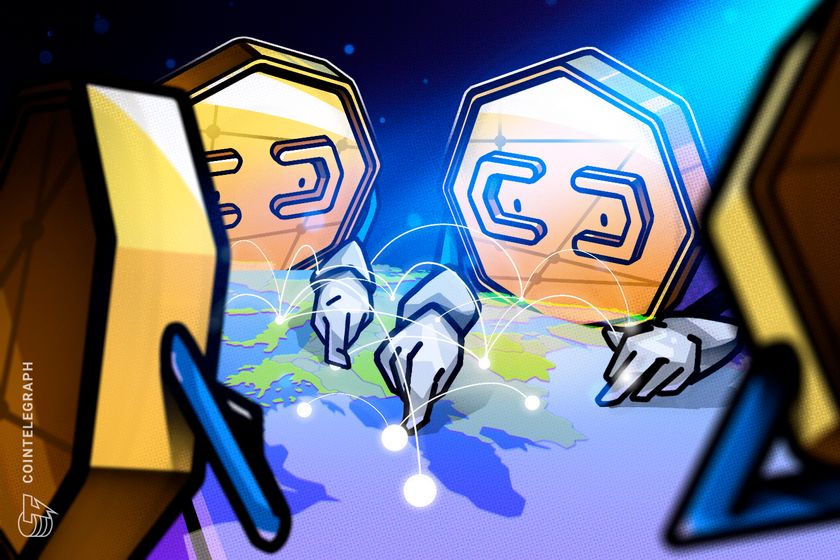Solana is preparing for a major overhaul that could make its famously fast blockchain even faster — and a lot easier to run.
In its “Crypto Monthly Recap for September 2025” research report published Oct. 3, global asset manager VanEck says Solana’s upcoming Alpenglow upgrade marks the biggest change to the network’s core software since launch.
The firm calls it “the largest upgrade to Solana’s consensus in its history,” pointing to six key changes that together promise faster performance, lower costs, and greater reliability.
For readers less familiar with Solana’s design, Alpenglow essentially changes how the network’s thousands of validators agree on which transactions are valid. That process, known as consensus, is being streamlined so data moves through the system more efficiently and validators can operate with less friction.
What VanEck highlighted
Faster finality. Today, Solana takes around 12 seconds to finalize a transaction, meaning to confirm it permanently.
Alpenglow cuts that to about 150 milliseconds — roughly the time it takes to blink. Faster finality makes trades, payments and app interactions feel instantaneous, bringing Solana closer to web-level responsiveness.
Off-chain voting. Validators currently vote on every new block by submitting thousands of small transactions on-chain.
That keeps the network secure but clogs bandwidth. Alpenglow moves voting off-chain, letting validators exchange votes privately and later post a single proof. This clears space for regular user transactions and helps keep network fees low.
Simpler validator costs. Instead of paying transaction fees for every vote, validators will submit a single Validator Admission Ticket each cycle.
This reduces costs and makes it easier for smaller operators to run validators, which strengthens decentralization and network security.
Streamlined communication. Solana’s nodes constantly share messages to stay in sync, a process known as “gossip.”
Alpenglow reduces this background traffic so validators spend less time and bandwidth coordinating with each other. That makes the system more stable, even when some validators go offline.
Bigger blocks. Developers plan to increase block capacity by 25% by the end of the year.
A block is a batch of transactions added to the ledger. More capacity means Solana can fit more transactions into each block, reducing waiting times and congestion.
The Firedancer client. Built by Jump Crypto, Firedancer is a second, independent version of Solana’s validator software expected to go live in late 2025.
Having two clients means the network can keep running smoothly if one experiences problems.
It also includes a proposal called SIMD-0370, which removes Solana’s fixed limit on block size. That would let the network automatically scale with faster hardware, improving long-term throughput.
P-tokens for efficiency. Solana’s current SPL tokens, used for most on-chain assets, require a lot of computing power to move.
VanEck says the new P-token format will reduce that demand by about 95 percent, freeing up space in each block and boosting total transaction capacity by roughly 10 percent. This makes token transfers cheaper and the network more efficient under heavy use.
Together, these changes show how Solana is redesigning its infrastructure to support the next generation of decentralized finance, gaming and tokenized asset applications.
What Solana’s Engineers Are Building Beyond That
VanEck’s analysis captures the key elements of Alpenglow, but Solana Labs’ Alpenglow white paper shows that the upgrade goes even deeper than the firm described. Engineers have built several behind-the-scenes changes aimed at making Solana faster, sturdier, and easier to maintain over time.
One of the most significant additions is Rotor, a new broadcast layer that replaces Solana’s existing Turbine system for spreading data among validators.
Rotor transmits information more efficiently, cutting down on duplicated packets and shortening the time it takes for new blocks to reach the entire network.
The change helps transactions confirm more smoothly and makes the network more responsive under heavy load.
Another improvement involves local signature aggregation, which allows validators to combine multiple transaction signatures before broadcasting them to the rest of the network.
Every transaction on Solana carries a digital signature proving its origin; processing each one separately consumes computing power and bandwidth. By grouping signatures together, Alpenglow lightens that workload, reducing the computational cost of maintaining security.
The upgrade also strengthens fault tolerance, ensuring that Solana continues to function even if as many as 40 percent of validators lose connectivity or temporarily go offline. This improvement makes the network more resilient during regional outages or traffic spikes, limiting the risk of downtime.
In addition, Alpenglow cuts unnecessary “gossip” traffic — the background messages validators exchange to stay in sync. Reducing this chatter not only frees up bandwidth but also helps validators in regions with slower internet connections participate effectively, broadening Solana’s global base of operators.
Finally, Solana has reworked validator participation through a ticket-based system that replaces thousands of tiny voting transactions with a single predictable admission step. This change simplifies the cost structure and lowers barriers for smaller operators, promoting fairer participation and stronger decentralization.
Taken together, these refinements transform Alpenglow from a simple speed upgrade into a full redesign of how Solana communicates internally. They show Solana Labs’ push to make the network not just fast in theory but also dependable at scale — an essential step as more financial and consumer applications move on-chain.
Source: https://www.coindesk.com/tech/2025/10/05/solana-s-upcoming-architectural-changes-and-why-they-matter

